If your garlic plants are starting to show odd spots or their growth has slowed down, you’re not alone.
Garlic might be hardy, but it’s still vulnerable to a surprising number of garlic pests and diseases that can weaken its yield and leave gardeners frustrated.
From viral infections to annoying little insects, each problem affects the plant in its own way, and recognizing the warning signs early can make all the difference.
Below are 11 of the most common garlic pests and diseases that garlic growers deal with, along with what you can do to help your plants bounce back.
#1. Garlic Mosaic Virus
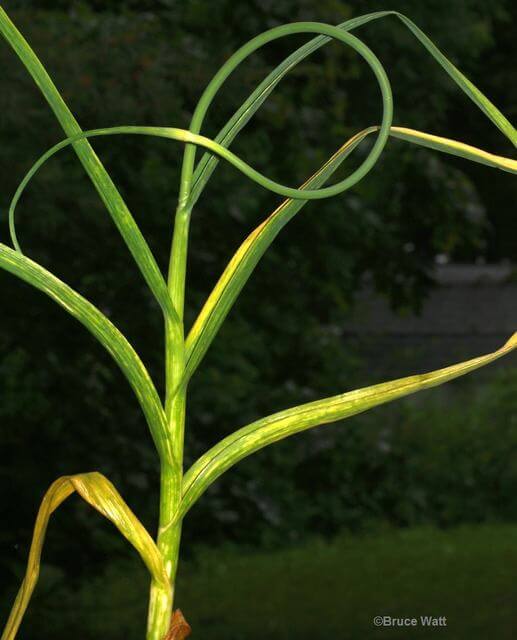
Image source: Ukrup
Garlic mosaic virus causes mosaic patterns on the leaves, it is mottling or streaking. It causes stunted plant growth and reduced bulb size.
Because it is a viral disease, there is no method to treat it; growing healthy garlic and controlling the aphid population in your garlic is all you can do.
#2. Purple Blotch
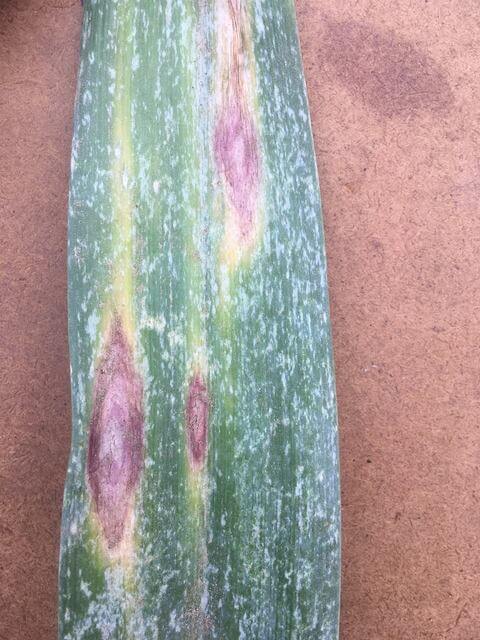
Image source: Ag.umass.edu
Purple blotch is a common fungus that infects garlic plants with small, water-soaked lesions on the leaves or stalks. Over time, those lesions enlarge and turn brown or purple, and then kill the tissue.
To prevent, crop rotation is a useful way, as well as ensuring that the soil has proper drainage.
#3. Botrytis Neck Rot
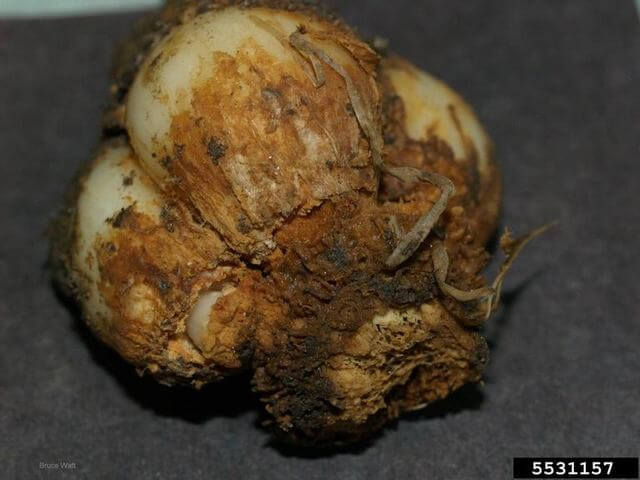
Image source: Invasive
Your garlic garden will be a major loss if botrytis neck appears. You might notice water-soaked neck rot at the soil line and, over time, the fungus grows down to the bulb and starts to attack the inner axis. They prefer cool and wet conditions.
To deal with this problem, you need to remove the diseased plants or use preventative measures like avoiding too much mulch and irrigation. But getting rid of the disease is nearly impossible.
#4. Rust
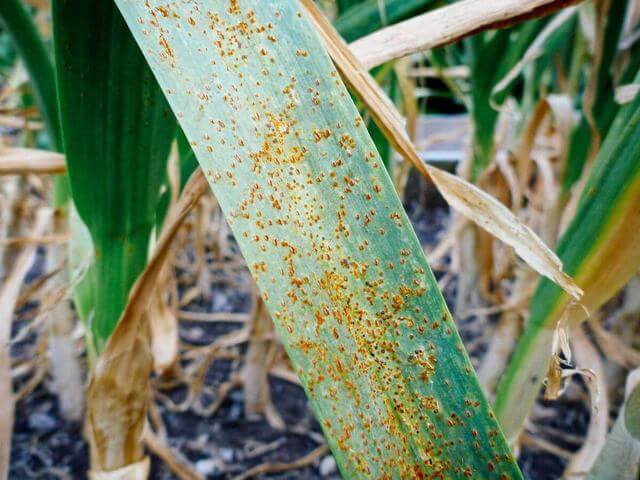
Image source: Gardenbetty
Garlic rust shows up as tiny white specks that evolve into orange or yellow pustules along leaves and stems.
It weakens the plant over time. Treating early with the right fungicide and removing infected leaves helps minimize damage.
#5. Downy Mildew
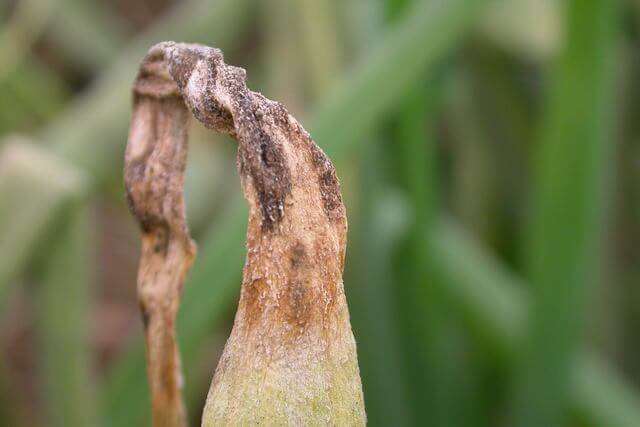
Image source: Cropscience
Downy Mildew is one of the common fungal garlic diseases that cause pale spots or elongated patches on the leaves of the plant, and you’ll see gray-purple fuzzy growth over the leaf surface.
This fungal disease spreads in humid conditions. Improve air circulation and apply fungicides designed for mildew when needed.
#6. White Rot
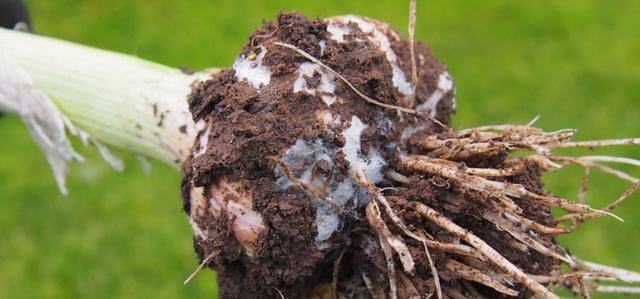
Image source: Growveg
First, the outer leaves start yellowing. Then the entire plant seems to struggle. White rot attacks the roots and base, leading to stunted growth.
Long-term crop rotation is your best bet, and some fungicides may help if applied early.
#7. Leafminers
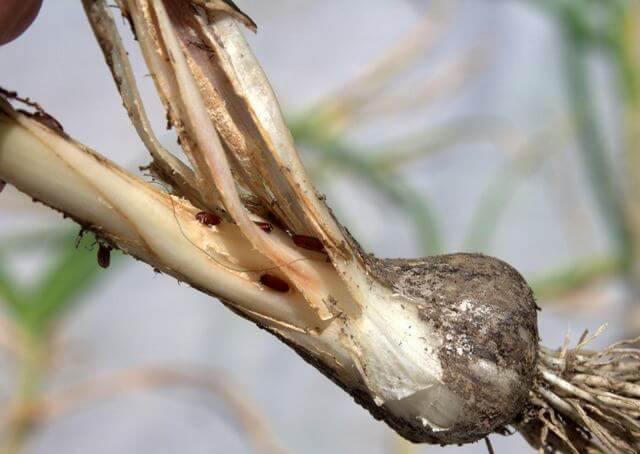
Image source: Usethatherb
These sneaky pests tunnel through garlic leaves, leaving behind winding, see-through trails that turn into blotchy white patches.
Heavy infestations can cause leaves to drop too soon. Keep foliage healthy and remove any affected leaves fast.
#8. Onion Maggots
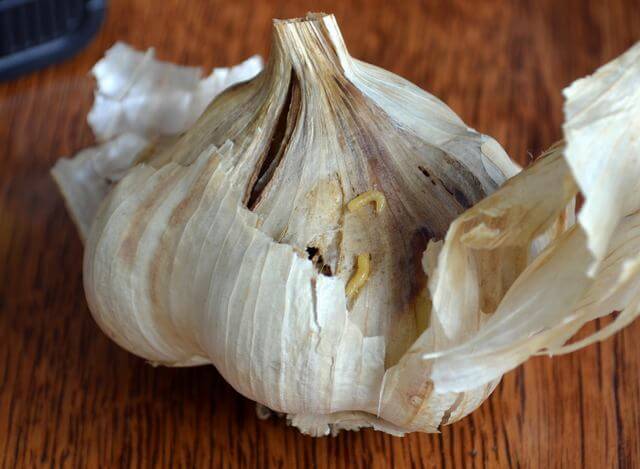
Image source: Cohutt
Onion maggots are a frustrating pest that infests garlic plants, causing stunted or wilting seedlings.
To control them, let’s practice good sanitation in your garden, as well as remove all the onion bulbs in your garden at the end of the season, because onion maggots will use them as a food source.
Besides, you can put floating row covers to protect your plants by stopping the females from laying eggs on your garlic plants.
#9. Bulb Mites
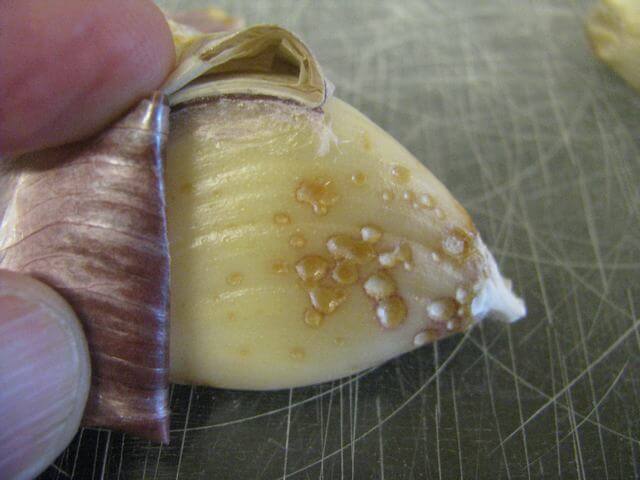
Image source: Rasacreekfarm
These pests settle into stored garlic and move into your garden when you plant affected cloves.
Plants grow slowly, and the bulbs can rot. Try soaking garlic seeds in hot (but not boiling) water before planting to cut down on mite populations.
#10. Lesion Nematode
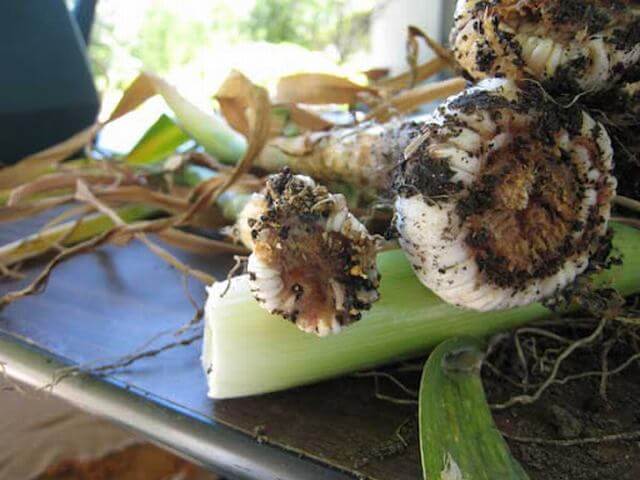
Image source: Theplantlady
Lesion Nematode causes stunted growth and round or irregular lesions on the roots. There aren’t too many ways to get rid of them, but treating your garlic bulbs in hot water can help control them.
Cook them in 100°F water for 30 minutes, don’t let the water get too hot or the bulbs won’t germinate.
#11. Thrips
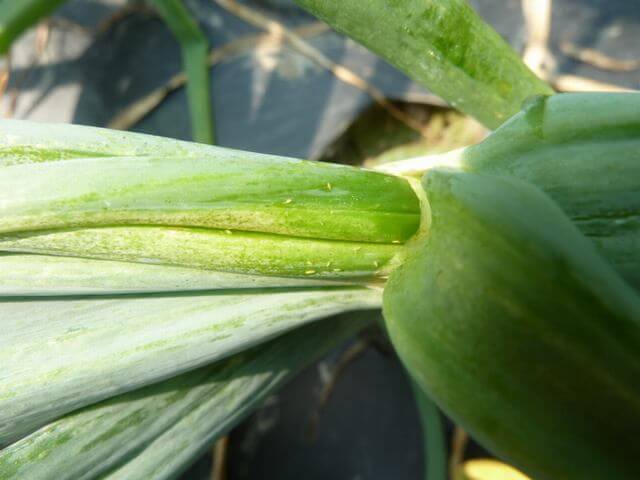
Image source: Ag.umass.edu
Thrips leave behind twisted, discolored leaves and tiny scars where they’ve sucked plant juices. They multiply fast but have natural enemies.
Try introducing beneficial insects like lacewings, predatory mites, or pirate bugs into your garden to help balance them out
